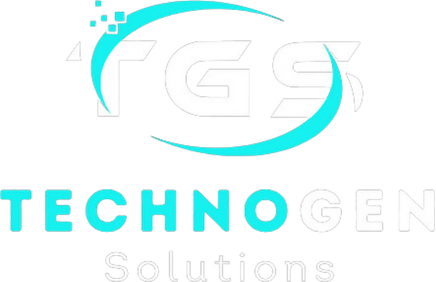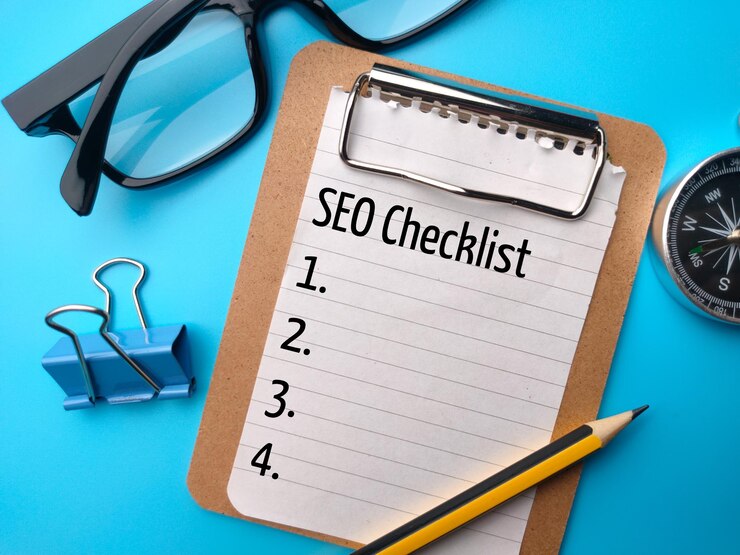In today’s highly competitive digital landscape, businesses need a well-structured SEO strategy to ensure their website ranks high on search engines like Google. Techno Gen Solutions aims to guide companies through the most important SEO actions to help them secure top rankings, attract more visitors, and boost conversions. Whether you’re a seasoned digital marketer or just starting, this SEO strategy checklist will walk you through the key actions that can significantly improve your website’s ranking success.
What is SEO, and Why Does It Matter?
SEO, or Search Engine Optimization, is the process of optimizing your website to make it more visible to search engines. When your website ranks higher on search engine results pages (SERPs), you’ll naturally attract more visitors. This boost in traffic can lead to increased engagement, higher conversion rates, and, ultimately, better ROI.
The Role of SEO in Digital Marketing
SEO is the backbone of digital marketing strategies. It focuses on ensuring that your website aligns with the search engine algorithms used by platforms like Google to rank websites. These algorithms evaluate a wide range of factors to decide which sites should appear at the top of search results.
But how do you implement the best SEO strategies to ensure ranking success?
Key Actions for SEO Strategy Ranking Success

1. Keyword Research and Optimization
One of the most important steps in SEO is thorough keyword research. By identifying the right keywords and phrases your target audience is searching for, you increase the likelihood that your website will appear in relevant searches. Here are the steps for keyword success:
- Identify Primary Keywords: These are the main terms that directly relate to your products or services. For instance, if you’re offering SEO services, your primary keyword might be “SEO solutions.”
- Long-tail Keywords: These are more specific phrases that potential customers might use. An example could be “affordable SEO services for small businesses.”
- Keyword Placement: Place keywords in important sections of your site, including the title, headers, meta descriptions, and the first 100 words of your content.
2. On-Page Optimization
On-page SEO involves optimizing the content and structure of your site’s individual pages. This is essential for search engines to understand what your website is about. Here are the core aspects of on-page optimization:
- Meta Titles and Descriptions: Each page should have a unique meta title and description that includes your primary keyword.
- Header Tags: Properly use H1, H2, H3, etc., to structure your content in a way that’s easy for both users and search engines to navigate.
- Internal Linking: Include links to other pages within your website to help search engines crawl and index your site more effectively.
- Image Optimization: Optimize all images with alt tags that describe the content of the image while including relevant keywords.
3. Content Creation and Optimization
Content is the heart of any SEO strategy. Consistently publishing high-quality, relevant content will improve your rankings over time. Key points to consider include:
- Focus on Quality over Quantity: Longer, in-depth posts tend to perform better in search engines than shorter pieces. However, quality is more important than sheer word count.
- Include Keywords Naturally: Avoid keyword stuffing, which can lead to penalties from search engines. Make sure keywords flow naturally within your content.
- Engaging and Informative: Ensure your content is both engaging and informative to keep users on your page for longer, which can improve your rankings.
4. Mobile Optimization
With the majority of users now accessing the web through mobile devices, mobile optimization is critical. Google has also shifted to mobile-first indexing, meaning it primarily uses the mobile version of your site to determine its ranking.
Steps for mobile optimization include:
- Responsive Design: Ensure that your website automatically adjusts its layout based on the device being used.
- Fast Loading Times: Mobile users expect websites to load quickly. Compress images, enable caching, and minimize code to improve load speed.
- Easy Navigation: Make sure your site is easy to navigate on a mobile device, with clear buttons and minimal scrolling.
5. Technical SEO
Technical SEO refers to optimizing the backend structure of your website to help search engines crawl and index your site more efficiently. Here are a few key elements to focus on:
- XML Sitemaps: Submit an XML sitemap to Google to help it discover and index your site.
- Robots.txt File: Ensure you have a properly configured robots.txt file to prevent search engines from crawling unnecessary pages.
- HTTPS: Security is a ranking factor. Make sure your site uses HTTPS instead of HTTP for a secure browsing experience.
6. Link Building
Backlinks, or links from other websites to your own, are still a critical factor in determining rankings. Focus on building high-quality, authoritative backlinks from trusted sites.
Tactics for link building include:
- Guest Posting: Write high-quality content for other websites in exchange for a link back to your own site.
- Content Sharing: Encourage others to link to your content by sharing your articles on social media and other platforms.
- Broken Link Building: Identify broken links on other websites and suggest your content as a replacement.
7. User Experience (UX) and Engagement Metrics
Search engines are increasingly factoring in user experience and engagement metrics like bounce rate, time on site, and click-through rates. Here’s how to optimize for UX:
- Fast Loading Pages: Ensure your pages load quickly on all devices.
- Easy Navigation: Make sure users can find what they’re looking for without excessive clicks or scrolling.
- Engaging Content: Use multimedia elements like videos, images, and infographics to keep users engaged.
8. Analytics and Continuous Monitoring
SEO is not a one-time task. It requires constant monitoring and adjustment. Use tools like Google Analytics and Google Search Console to track your progress and refine your strategies.
Key metrics to monitor include:
- Organic Traffic: The number of visitors arriving at your site through search engines.
- Bounce Rate: The percentage of visitors who leave after viewing just one page.
- Keyword Rankings: How well your site ranks for its target keywords.
Final Thoughts on SEO Strategy
Achieving SEO success is a complex process that requires a comprehensive approach. By following this SEO strategy checklist from Techno Gen Solutions, you’ll be well on your way to improving your website’s ranking, driving more traffic, and ultimately increasing your revenue. Regular updates and adjustments are key to staying ahead of the competition.



Leave A Comment